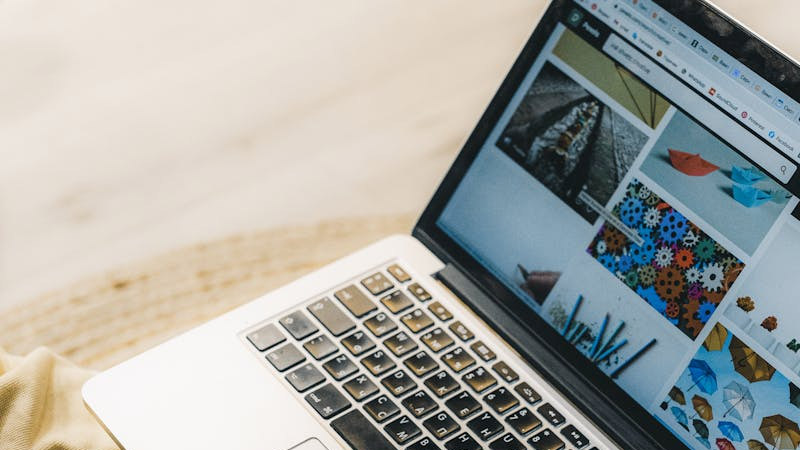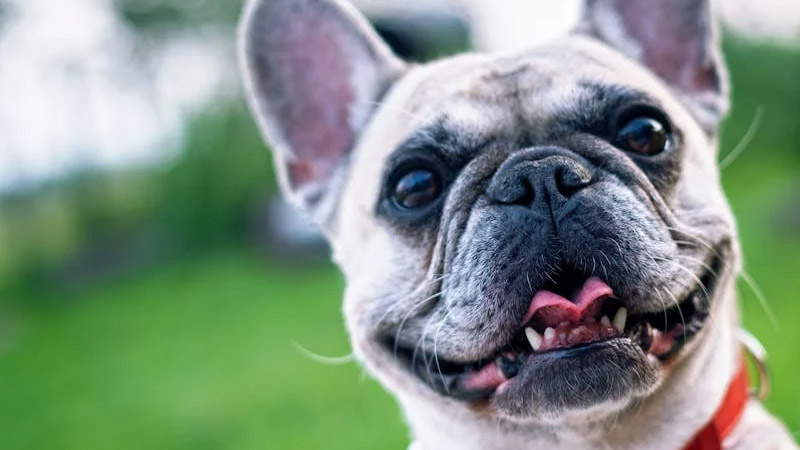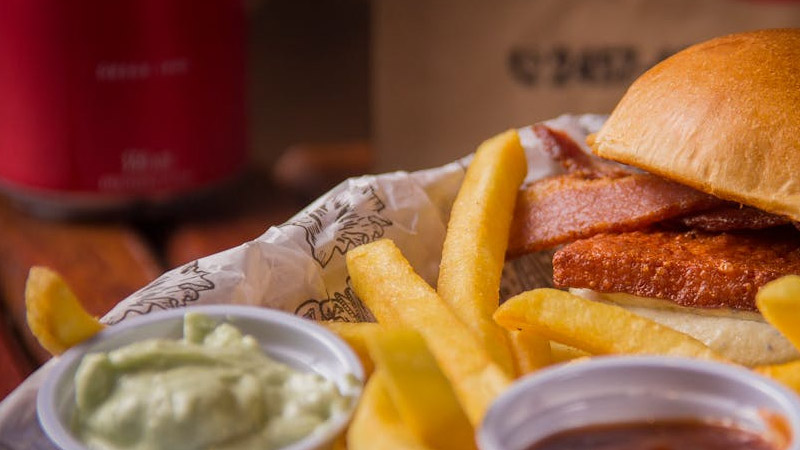A Step-by-Step Guide to Color Matching: Which Colors Pair Well with Blue in Web Design?
2024 / 11 / 20
In the vast universe of website design, color is undoubtedly the brightest star. It not only guides visual direction but also profoundly influences user emotion and behavior. The selection and combination of colors are like a magic wand in the designer's hand, capable of creating either a pleasant or a confusing browsing experience. Among the myriad of colors, blue, with its unique charm, has long held a pivotal position in web design.
So, why is blue so prevalent in web design?

Blue, as one of the common colors in nature, is a favorite in web design due to its serene, profound, and expansive qualities. It demonstrates unique advantages, particularly in terms of visual characteristics, psychological impact, and product reuse rates.
Visual Characteristics
In web design, blue is often used as a background color or primary hue, capable of creating a stable and reliable atmosphere. This stability is significant for enhancing user trust and reducing visual fatigue. For instance, many finance and insurance websites tend to use blue as their main color to convey a professional and robust brand image.
Furthermore, blue not only highlights a website's professionalism and authority but can also spark users' curiosity and desire to explore the unknown. Therefore, it is often associated with expertise and a technological feel, especially in fields like technology, education, and healthcare.
Psychological Impact
In web design, the rational use of blue can effectively alleviate user anxiety and enhance the browsing experience. For example, using blue in critical scenarios such as the checkout page of an e-commerce site or the submission page of an online exam can reduce users' psychological pressure, thereby increasing their satisfaction and loyalty.
On webpages that require prolonged user concentration and deep thinking, blue can also help guide attention to key information, thus improving reading efficiency and comprehension.
Increasing Product Reuse Rate
Blue not only enhances the user visit experience but can also increase product reuse rates. This is because blue possesses visual stability and continuity, which can stimulate user memory and association. When users revisit a site, blue can quickly evoke a sense of familiarity and trust, thereby improving their retention and engagement. This characteristic makes blue highly valuable for building long-term user relationships and enhancing brand loyalty.
Which Colors Pair Well with Blue in Web Design?
In web design, blue, as a classic and sophisticated color, can exhibit diverse visual effects and emotional experiences when paired with various colors. For example:
1. Blue and White

Blue and white form a classic color combination that creates a fresh, elegant, and pure atmosphere. In web design, this scheme is often used for modern minimalist-style websites, highlighting simplicity and sophistication.
For instance, using blue as the primary color and white as the accent or background color creates a sharp contrast, making the page appear neater and more organized. Simultaneously, the blue-and-white scheme can evoke associations with natural elements like blue skies with white clouds or the ocean, imparting a sense of tranquility and relaxation to users.
2. Blue and Gray

As a neutral color, gray paired with blue can create a stable yet stylish atmosphere. This combination is highly suitable for website designs in industries like business and finance, conveying a professional, reliable, and authoritative brand image.
In practice, deep or light blue can be paired with gray. By adjusting the saturation and brightness of blue, along with variations in gray's depth, different visual effects and layers can be achieved.
3. Blue and Gold

Gold represents nobility and luxury. Paired with blue, it accentuates a website's high-end and refined quality. This scheme suits website designs for industries like luxury goods and premium services, elevating the overall quality and grade of the site.
In web design, gold can be used as an accent or secondary color, creating a striking contrast with blue to make the page appear more luxurious and elegant. Additionally, gold can add highlights and attract user attention.
4. Blue and Orange

Blue and orange are complementary colors, a pairing that often generates strong visual impact. Blue signifies calmness and stability, while orange represents energy and enthusiasm. Skillfully combining these two contrasting colors can yield unexpected results.
In web design, blue can serve as the primary color, with orange used for accents or buttons, making the page look more vibrant and engaging. This combination can also stimulate user interest and curiosity, encouraging further exploration and interaction.
5. Blue and Yellow

The combination of blue and yellow creates a bright and lively atmosphere. Blue evokes calm, while yellow symbolizes sunshine and hope. These colors complement each other, making the overall space more dynamic and interesting.
In web design, blue can be used as the background or primary color, with yellow serving as an accent or highlight, resulting in a vivid and lively page. This scheme is suitable for contexts requiring a light-hearted and cheerful atmosphere, such as children's websites or educational sites.
6. Blue and Green

Both blue and green are common colors in nature, together evoking a fresh and natural vibe. This pairing is ideal for creating Scandinavian or rustic-style website designs, offering users a sense of peace and comfort.
In practice, blue and green can be used in gradients or mixed combinations to create soft, natural transitions. Additionally, incorporating natural elements (like plants, flowers) can enhance this atmospheric effect.
In summary, blue can exhibit a wide range of visual effects and emotional experiences when paired with various colors in web design. Designers can select appropriate color schemes based on factors like the website's theme, target audience, and brand image to create visually appealing and highly functional web designs.
So, why is blue so prevalent in web design?

Blue, as one of the common colors in nature, is a favorite in web design due to its serene, profound, and expansive qualities. It demonstrates unique advantages, particularly in terms of visual characteristics, psychological impact, and product reuse rates.
Visual Characteristics
In web design, blue is often used as a background color or primary hue, capable of creating a stable and reliable atmosphere. This stability is significant for enhancing user trust and reducing visual fatigue. For instance, many finance and insurance websites tend to use blue as their main color to convey a professional and robust brand image.
Furthermore, blue not only highlights a website's professionalism and authority but can also spark users' curiosity and desire to explore the unknown. Therefore, it is often associated with expertise and a technological feel, especially in fields like technology, education, and healthcare.
Psychological Impact
In web design, the rational use of blue can effectively alleviate user anxiety and enhance the browsing experience. For example, using blue in critical scenarios such as the checkout page of an e-commerce site or the submission page of an online exam can reduce users' psychological pressure, thereby increasing their satisfaction and loyalty.
On webpages that require prolonged user concentration and deep thinking, blue can also help guide attention to key information, thus improving reading efficiency and comprehension.
Increasing Product Reuse Rate
Blue not only enhances the user visit experience but can also increase product reuse rates. This is because blue possesses visual stability and continuity, which can stimulate user memory and association. When users revisit a site, blue can quickly evoke a sense of familiarity and trust, thereby improving their retention and engagement. This characteristic makes blue highly valuable for building long-term user relationships and enhancing brand loyalty.
Which Colors Pair Well with Blue in Web Design?
In web design, blue, as a classic and sophisticated color, can exhibit diverse visual effects and emotional experiences when paired with various colors. For example:
1. Blue and White

Blue and white form a classic color combination that creates a fresh, elegant, and pure atmosphere. In web design, this scheme is often used for modern minimalist-style websites, highlighting simplicity and sophistication.
For instance, using blue as the primary color and white as the accent or background color creates a sharp contrast, making the page appear neater and more organized. Simultaneously, the blue-and-white scheme can evoke associations with natural elements like blue skies with white clouds or the ocean, imparting a sense of tranquility and relaxation to users.
2. Blue and Gray

As a neutral color, gray paired with blue can create a stable yet stylish atmosphere. This combination is highly suitable for website designs in industries like business and finance, conveying a professional, reliable, and authoritative brand image.
In practice, deep or light blue can be paired with gray. By adjusting the saturation and brightness of blue, along with variations in gray's depth, different visual effects and layers can be achieved.
3. Blue and Gold

Gold represents nobility and luxury. Paired with blue, it accentuates a website's high-end and refined quality. This scheme suits website designs for industries like luxury goods and premium services, elevating the overall quality and grade of the site.
In web design, gold can be used as an accent or secondary color, creating a striking contrast with blue to make the page appear more luxurious and elegant. Additionally, gold can add highlights and attract user attention.
4. Blue and Orange

Blue and orange are complementary colors, a pairing that often generates strong visual impact. Blue signifies calmness and stability, while orange represents energy and enthusiasm. Skillfully combining these two contrasting colors can yield unexpected results.
In web design, blue can serve as the primary color, with orange used for accents or buttons, making the page look more vibrant and engaging. This combination can also stimulate user interest and curiosity, encouraging further exploration and interaction.
5. Blue and Yellow

The combination of blue and yellow creates a bright and lively atmosphere. Blue evokes calm, while yellow symbolizes sunshine and hope. These colors complement each other, making the overall space more dynamic and interesting.
In web design, blue can be used as the background or primary color, with yellow serving as an accent or highlight, resulting in a vivid and lively page. This scheme is suitable for contexts requiring a light-hearted and cheerful atmosphere, such as children's websites or educational sites.
6. Blue and Green

Both blue and green are common colors in nature, together evoking a fresh and natural vibe. This pairing is ideal for creating Scandinavian or rustic-style website designs, offering users a sense of peace and comfort.
In practice, blue and green can be used in gradients or mixed combinations to create soft, natural transitions. Additionally, incorporating natural elements (like plants, flowers) can enhance this atmospheric effect.
In summary, blue can exhibit a wide range of visual effects and emotional experiences when paired with various colors in web design. Designers can select appropriate color schemes based on factors like the website's theme, target audience, and brand image to create visually appealing and highly functional web designs.
MORE BLOG
-
What Are Web Development and Web Design? The Two Pillars of Building Successful Web Solutions
2025/11/19 Transforming it into a functional, live website requires a series of complex conversion processes, including writing code, setting up databases, and building backend functionalities. -
How to Create a Pet Supplies E-commerce Website? Master 3 Web Design & 3 Online Promotion Strategies
2025/11/11 Mastering practical skills is the key to success! In this article, Arachne Group Limited will guide pet brand merchants step-by-step, helping you build an online shopping paradise where pet owners love to browse and are happy to make purchases. -
Key Points in Local Fast Food Restaurant Web Design: Crafting an Online Experience that Appeals to All Senses
2025/11/05 In this digital age, a professional and user-friendly website becomes your restaurant's "24/7 online extension." It is not merely a digital menu board but a strategic cornerstone for attracting new customers, retaining regulars.
















